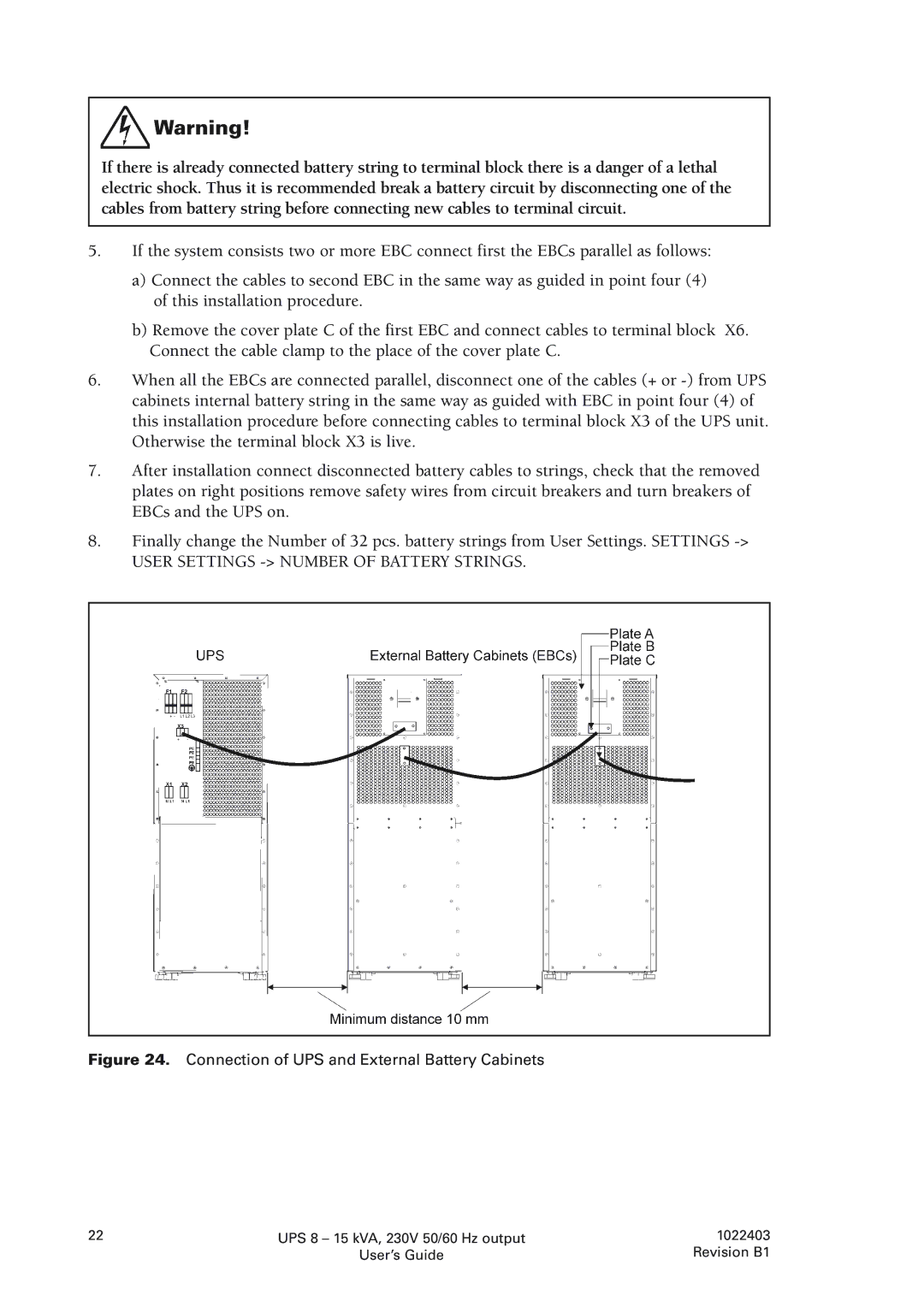8 - 15 kVA, 8 - 10 kVA specifications
Powerware 8 - 10 kVA and 8 - 15 kVA are robust uninterruptible power supply (UPS) systems designed to provide reliable power protection and enhanced performance for critical applications. These UPS systems are ideal for various business environments, including data centers, server rooms, and industrial settings.A primary feature of the Powerware series is its modular design, which allows for easy scalability and adaptability to meet the growing power requirements of modern IT infrastructure. The systems can be configured to provide redundancy, ensuring increased reliability and uptime while delivering high-efficiency performance.
One of the standout characteristics of the Powerware 8 - 10 kVA and 8 - 15 kVA models is their advanced double-conversion technology, which offers consistent power conditioning and isolation from utility issues like voltage surges, frequency variations, and power outages. This technology ensures that connected devices receive clean, stable power, minimizing the risk of downtime caused by electrical disturbances.
Another key feature is the availability of an intuitive LCD display that provides users with real-time information about the UPS status, critical alarms, and event logs, enabling proactive management of power demands and potential issues. The systems also support remote monitoring and management through advanced communication options, allowing IT administrators to maintain oversight of the power environment from any location.
The Powerware series incorporates high-efficiency designs that help reduce energy consumption, ultimately lowering operational costs. With an input power factor of up to 0.99 and a typical efficiency exceeding 94%, these UPS units not only contribute to environmental sustainability but also enhance the overall performance of the power infrastructure.
In addition to these practical features, the Powerware 8 - 10 kVA and 8 - 15 kVA models are equipped with multiple output options, including configurable outlets and hardwire connections, offering flexibility in deployment. They also come with advanced battery management systems, which optimize battery performance, extending their lifespan and reducing maintenance efforts.
Overall, Powerware 8 - 10 kVA and 8 - 15 kVA systems are reliable choices for businesses seeking efficient and adaptable power protection solutions to support their critical operations. Their innovative technologies and comprehensive features ensure that companies can maintain productivity while safeguarding their valuable equipment and data against power disruptions.

